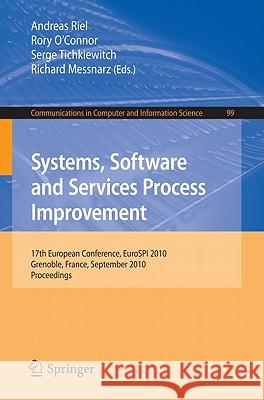Systems, Software and Services Process Improvement » książka
Systems, Software and Services Process Improvement
ISBN-13: 9783642156656 / Angielski / Miękka / 2010 / 303 str.
A typical characterization of EuroSPI is reflected in a statement made by a c- pany: ." . . the biggest value of EuroSPI lies in its function as a European knowledge and experience exchange mechanism for SPI and innovation. " Since its beginning in 1994 in Dublin, the EuroSPI initiative has outlined that there is not a single silver bullet to solve SPI issues, but that you need to understand a c- bination of different SPI methods and approaches to achieve concrete benefits. The- fore each proceedings volume covers a variety of different topics, and at the conf- ence we discuss potential synergies and the combined use of such methods and - proaches. These proceedings contain selected research papers for five topics: Section I: SPI Tools Section II: SPI Methods Section III: SPI in SMEs Section IV: Economic Aspects of SPI Section V: The Future of SPI Section I presents studies on SPI tools. The authors provide an insight into new tools which can be used for SPI. Willem Bekkers et al. present a new assessment method and tool for software product management. Ismael Edrei-Espinosa-Curiel et al. illustrate a graphical approach to support the teaching of SPI. Paul Clarke and coworkers deal with an analysis and a tool to help real adoption of standards like ISO 12207 and they focus on SPI implementation and practices. Esparanca Amengual et al. present a new team-based assessment method and tool.











